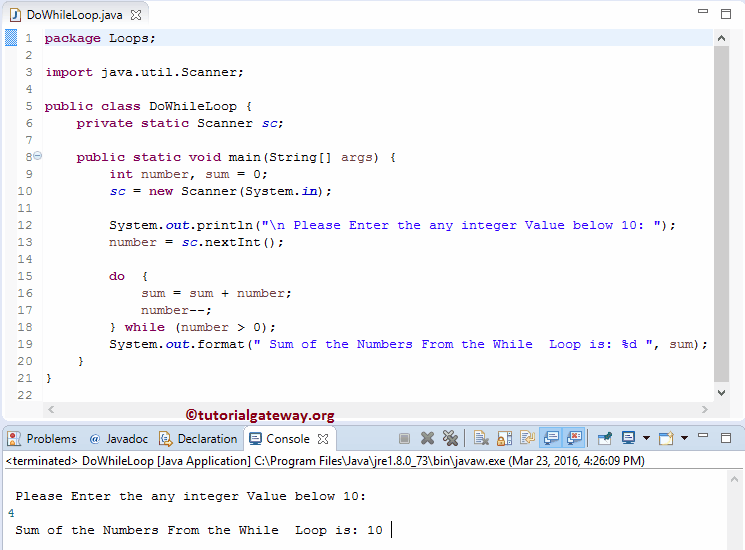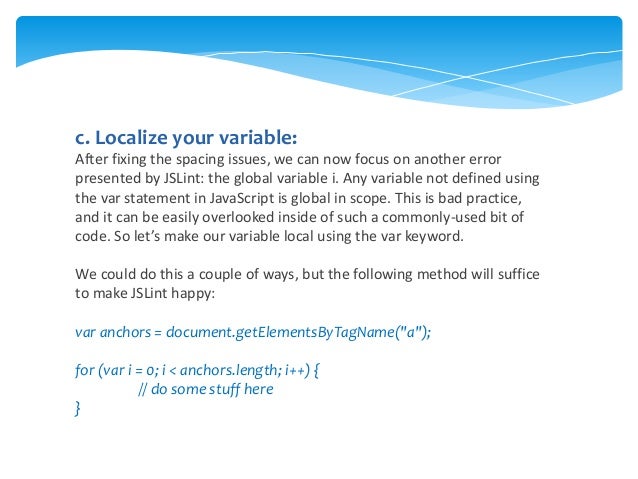

The variation in different types of loop structure is nothing but syntactic variations. The loop condition that determines if the looping should continue or the program should break from it.The increment/decrement of the control variable, which is modified each time the iteration of the loop occurs.The control variable must be initialized in other words, it must have an initial value.There is a control variable, called the loop counter.There is a common structure of all types of loops, such as: The do…while loop is slightly different in the sense that it executes the statements within its body for one or more times. If the loop continuation condition is false, it stops execution. The for and while statements perform the repetition declared in their body zero or more times. These three looping statements are called for, while, and do…while statements. Java provides three repetition statements/looping statements that enable programmers to control the flow of execution by repetitively performing a set of statements as long as the continuation condition remains true. To take some additional classes on Java check out TechRepublic Academy! Looping in Java This article describes the concept behind looping in Java and the various types of loops. A loop is a type of control statement which encircles the flow for a while-something like the vortexes in a river stream. And, control statements provide the way to maneuver the flow of the program into different directions that are linear otherwise. Adding to the confusion, they are of various types. Return false if it is not found.The first stumbling block when we start learning any programming language is the concept of loops. Write a spellcheck() method using an enhanced for-each loop that takes a word as a parameter and returns true if it is in the dictionary array.
#Java for loop syntax full
You may use the code in instead to have the full dictionary.

If you did the optional printStartsWith(firstLetters) method, re-write that one too. Re-write the method to use an enhanced for-each loop instead of an indexed for-loop. Programming Challenge : SpellChecker 2 ¶Ĭopy the spellcheck method that you used in the Spell Checker Challenge in the last lesson.


This would be true if the loop started at the end of the array and moved toward the beginning.Whenever the first element in array is equal to target.Add another high score and another name to the arrays and run again. Notice the for each loop with an int array and a String array.


 0 kommentar(er)
0 kommentar(er)
